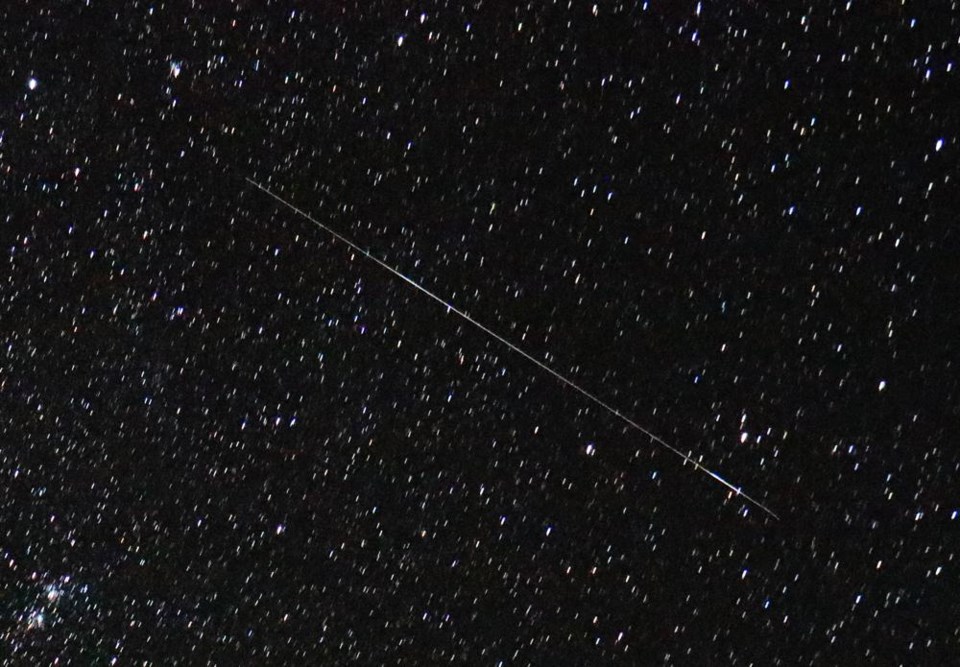This was one of the meteors from the Perseid meteor shower, taken north of Weyburn on Thursday evening.
The meteor shower can be viewed every year, from around July 17 to August 24, as Earth crosses the orbital path of Comet Swift-Tuttle, the parent of the meteor shower. Debris from this comet litters the comet’s orbit, but Earth doesn’t really get into the thick of the comet rubble until after the first week of August. The bits and pieces from Comet Swift-Tuttle slam into the Earth’s upper atmosphere at some 130,000 miles (210,000 km) per hour, lighting up the nighttime with fast-moving Perseid meteors.
Comet Swift-Tuttle has a very eccentric, or oblong, orbit that takes it outside the orbit of Pluto when farthest from the sun, and inside the Earth’s orbit when closest to the sun. It orbits the sun in a period of about 133 years. Comet Swift-Tuttle last reached perihelion – closest point to the sun – in December 1992 and will do so next in July 2126.
The 2021 Perseid meteor shower produced the most meteors in the predawn hours of August 11, 12 and 13, in a dark, moonless sky.
The name of the meteor shower arose as they all seem to come from the constellation Perseus, near the famous Double Cluster. Hence, the meteor shower is named in honor of the constellation Perseus the Hero. However, this is a chance alignment of the meteor shower radiant (or central point) with the constellation Perseus.


